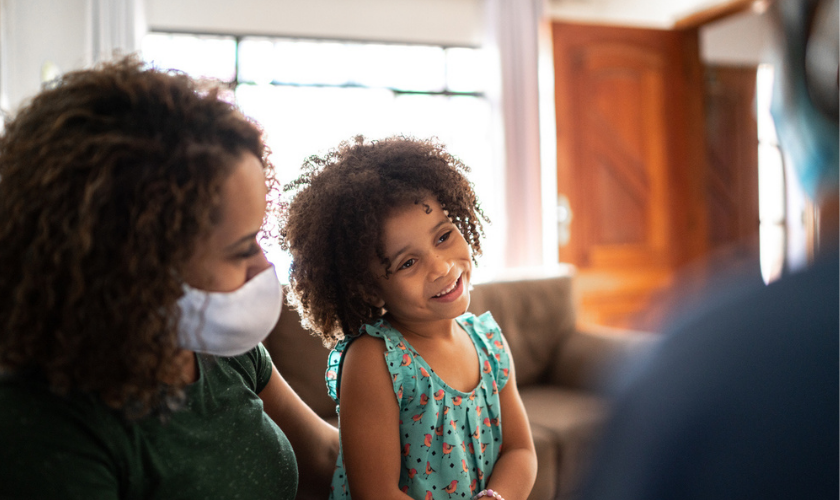How to Care for Children with Serious Illness When Pediatric Palliative Care is Unavailable

Children are not little adults. And when it comes to palliative care, they need and deserve a strategy tailored to their unique and evolving medical situations. While most major tertiary hospitals now have dedicated pediatric palliative care (PPC) teams, availability of PPC and services throughout the US is highly variable.
Dedicated pediatric home-based palliative care services are even more inconsistently available, and usually clustered around large cities, unless a state has prioritized statewide reimbursement for these services. However, those states are the exception, rather than the rule. Most recent national data estimate that 70% of children’s hospitals currently offer PPC services; only about 30% of the programs offer home visit services.
"Children are not little adults. And when it comes to palliative care, they need and deserve a strategy tailored to their unique and evolving medical situations."
Children or young adults with medical complexity, who are treated in pediatric hospitals, comprise a disproportionately high percentage of hospital stays and a high proportion of hospital costs. And the population of children with special health care needs is increasing. Fifteen percent of US children less than 18 years old (11.2 million children) and 23% of American households have at least one child with special health care needs.
New PPC Task Force as a Resource
To address and meet these challenges, we formed the Pediatric Palliative Care Task Force (“the Task Force”) in 2020, hosted by the National Coalition for Hospice and Palliative Care. Its inter-professional membership is comprised of PPC leaders from the Coalition’s 13 member organizations, the American Academy of Pediatrics (AAP), American Psychological Association (APA), Association of Child Life Professionals (ACLP), and several family advocates. The Task Force is distinct in that we include representation from all the different fields of palliative care; we actively seek interdisciplinary collaborations and create real world solutions to continuously improve access to PPC.
"The goal of the Task Force is to provide equitable access to high quality pediatric palliative care for everyone."
The goal of the Task Force is to provide equitable access to high quality PPC for everyone. Over the next year, we will be focusing on payment and financing, need and capacity assessment, and raising knowledge and awareness. This will not only help PPC providers, but also adult palliative care professionals who may need to refer patients and families. We are asking and answering questions about need, access, how to best bring everybody together, and compiling all of the information into one comprehensive resource. We have not had a national, multi-disciplinary dedicated PPC group before; this is a new and exciting time for the field.
One effort currently underway is assessing and compiling PPC needs in every state, as well as local palliative care and pediatric hospice care resources into one tool—similar to getpalliativecare.org and NHPCO, but specific to pediatric patients. The tool will be available for use by families and clinicians, to identify PPC resources near patient homes. It will also enable researchers, experts, and advocates to identify gaps in PPC availability and lobby for the tools needed to close those gaps, improving equitable access to PPC nationwide. We are actively searching for financial support to help us create this critical tool.
The Impact of the COVID-19 Pandemic
Of course, the pandemic has thrown many curveballs into effective delivery of pediatric palliative care. At the beginning, emergency licensing changes meant that we could provide telehealth anywhere in the country, but we are now back to being limited to the state(s) in which we are licensed. Being able to create a system where we can provide telemedicine in other states is particularly important for children. Since PPC is only sporadically available in some locations, how do we increase access? We are grappling with these questions in the Task Force, too, to be able to fill those gaps and receive reimbursement for telehealth anywhere.
Because of the unique needs of pediatric patients and families, it is less effective to deliver some elements of palliative care via telehealth—like high quality, hands-on child life therapy and music therapy, for example. So while telemedicine is an effective adjunct in many cases, it should not fully replace in-person PPC. There may be innovative ways to use telehealth but in the perfect world, specialty PPC home-based services will be widely available and reimbursed in addition to telehealth options.
Finally, the COVID-19 pandemic has been a source of great stress and trauma for children and pediatricians. Approximate one hundred and forty thousand children have been bereaved of a caregiver due to COVID in the US, with Black and brown children at higher risk than white children. While COVID numbers are coming back down after experiencing a wave into the fall, children's hospitals have remained very full because of a delayed RSV season; now we are in flu season. Mental health problems in children have risen sharply. And so, pediatric clinicians haven't throttled back. Our hospitals have been at or near capacity; emergency rooms and intensive care units have been full, and staff are stressed. Simultaneously, pediatricians have been harassed for advocating for mask mandates and other evidence-based interventions to keep children in school safely. It has often felt like children's safety is not being prioritized. It has been hard.
Caring for Children Takes a Different Approach
One of the main lessons I have learned about pediatric palliative care versus adult palliative care is just how much more intense this work is, how much longer to expect to be involved in these children's lives, and how much more support the family needs. Effective care for adult versus pediatric patients differs for many reasons, including pediatric disease trajectories, the nature of their illnesses, clinical care delivery models, funding, research, education, ethics and staffing considerations among them.
One of the main lessons I have learned about pediatric palliative care versus adult palliative care is just how much more intense this work is, how much longer to expect to be involved in these children's lives, and how much more support the family needs.
Goals of care conversations take place over years, and goals often shift depending on the child's quality of life and health status. The impact of a child's illness is often intensified as it affects the family and community, too—siblings, grandparents, extended family, and others. Because of this, the needs of their family and our expectations for how they should receive wraparound palliative care are profound. Finally, pain and symptom management can look very different in children, especially towards the end of life, which can be protracted compared to that of older adults.
"High-quality pediatric palliative care must account for all these needs. It is time-intensive, psychosocially intensive, and emotionally intensive."
High-quality PPC must account for all these needs. It is time-intensive, psychosocially intensive, and emotionally intensive. Ensuring that each PPC team has enough resources from their organization and that team members are getting the support they need to do the job well for a long time is critically important for creating a sustainable workforce in PPC.
As a society, we desire for children not to suffer. PPC clinicians often collaborate with general pediatricians and adult palliative care clinicians alike, who may be uncomfortable caring for very sick children receiving palliative or hospice care. These providers may worry that they will not have the tools required to prevent or alleviate the child’s suffering. Importantly, general pediatrics training does not focus on conducting goals of care conversations or managing children living with serious illness. General pediatricians may be a good local resource, but some may feel that what we think of as “primary palliative care skills” are outside of their scope of practice.
What Adult Providers Should Know When Treating Children
The reality is that pediatric palliative care is not always available, leaving adult palliative care providers to care for children. Due to the complexity and uniqueness of this population, here are some tips to do this most effectively:
1) Please don't be afraid to reach out to a PPC colleague for support!
If the colleague is located in your state, they may be able use telehealth to provide expertise in the care of the child/children who they cannot visit in person. I want adult providers to know that we—both PPC clinicians throughout the field, and in the Task Force specifically—are a resource for you. For instance, if you don’t know who to reach out to, please email us. The Task Force can help connect you with pediatric clinicians and champions in your area, assist you in accessing PPC information and educational resources, and offer guidance on how to advocate for the needs of children in your community.
2) Be patient in navigating goals of care conversations with parents.
It is realistic that these conversations might take place over weeks, months, or years depending on how the child is doing. Invest the time with the family to cultivate their trust in you and your team.
3) Children often live longer and with better quality of life than we initially expect
Prognosticating in children can be very difficult. When children “do better” than anticipated, parental mistrust of medical professionals—and especially our ability to prognosticate—is common. This pattern can begin during pregnancy.
4) Dosing is different for children and adults.
Children metabolize medications differently than adults and as they die, some may require higher doses than adult physicians are accustomed to using, especially for dying geriatric adults.
5) The child is the patient, but the entire family needs palliative care.
Please do not forget about the siblings! If you do not have child life, psychology, or music therapy on your team, reach out to children’s hospitals nearby and ask whether your patient or their siblings could access ancillary services there.
My lasting message is this: it is a profound privilege to work in PPC. The work can be deeply sad, of course. But we are also present for times of unbridled joy and “magical moments” with patients that others never get to experience. This work is beautiful. The profession is so giving, and it provides us with a unique perspective about our lives.
